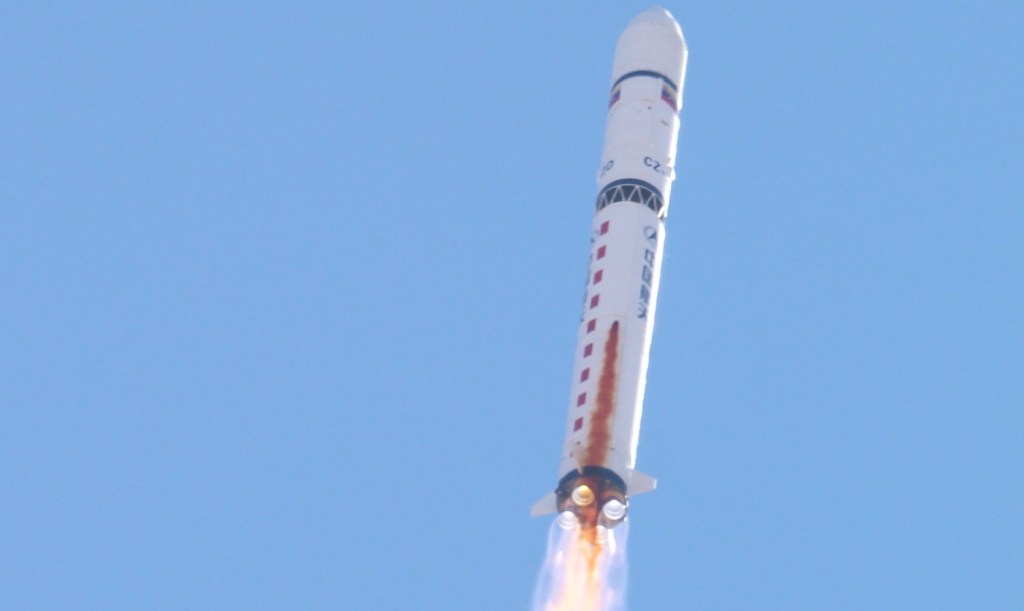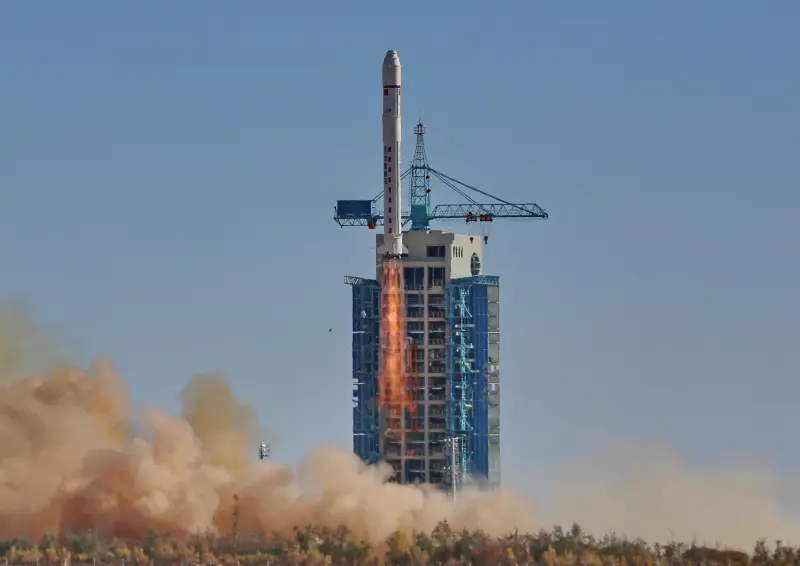Featured image: Xinhua
Lift Off Time | June 11, 2021 ~ 3:03 UTC | 11:03 BJT |
|---|---|
Mission Name | Beijing-3 |
Launch Provider | China Aerospace Science and Technology Corporation (CASC) |
Customer | Twenty First Century Aerospace Technology Company Ltd. |
Rocket | Long March 2D |
Launch Location | LC-9, Taiyuan Satellite Launch Centre, China |
Payload mass | Up to 3,500 kg (7,700 lb) |
Where did the spacecraft go? | Sun-Synchronous Orbit (SSO) |
Did they attempt to recover the first stage? | No, this is not a capability of the Long March 2D |
Where did the first stage land? | It crashed into the ocean |
Did they attempt to recover the fairings? | No, this is not a capability of the Long March 2D |
Were these fairings new? | Yes |
This was the: | – 52nd launch of a Long March 2D – 52nd orbital launch attempt of 2021 |
Where to watch | If available, a replay will be listed here |
How did it go?
The China Aerospace Science and Technology Corporation (CASC) successfully launched the Beijing-3 satellite atop a Long March 2D rocket, from LC-9 at the Taiyuan Satellite Launch Centre in China. The vehicle lifted off on June 11, 2021 at 3:03 UTC.
What is the Beijing-3?
Very little is known about the Beijing-3 satellite, other than it is a 0.5 m resolution Earth observation satellite being delivered to Sun-Synchronous Orbit (SSO). The satellite is based on the CAST3000E agile satellite platform, which uses high agility, stability, and precision technology and on-orbit image processing to produce high-quality and high resolution images of Earth. While there is little information about the Beijing-3, we can assume that it is related to the Beijing-1 and Beijing-2 missions, which were launched in 2005 and 2011, respectively.
The Beijing-1 and Beijing-2 missions were both constellations of satellites which provided the Chinese government and other companies with information on agriculture, urban development, pollution, water resources, and environment and disaster monitoring throughout China. It is unknown whether these are still operational, but they each had a 7-year lifespan.
Three other payloads were launched alongside the Beijing-3: the Haisi-2, the Wangwang-1, and the Tianjian Space Test-1.

Haisi-2
The Haisi-2 is a satellite developed by DFH Satellite Co. and Xiamen University. This remote sensing mission will be focused on marine research, observing costal and inland water environments, and will play a role in disaster support relief.
Wangwang-1
The Wangwang-1 commercial optical astronomy satellite was also developed by DFH Satellite Co. The satellite’s primary mission is to observe asteroids, their orbits, and their resources.
Tianjian Space Test-1
The Tianjian Space Test-1 satellite was developed by the Shanghai Academy of Space Flight Technology, a subsidiary of CASC. The satellite will carry out testing and verification of satellite health management systems.
What is the Long March 2D?
The Long March 2D (also known as the Chang Zheng 2D, CZ-2D and LM-2D), is a two-stage rocket, predominantly used for launching satellites to low-Earth orbit (LEO) and SSO. The Long March 2D is a two-stage version of the Long March 4, and is the smallest of all the active Long March rocket series.
The rocket’s maiden flight was on August 9, 1992, and it has since had a near perfect launch history, with the only incident being a partial failure on December 28, 2016.

First Stage
The first stage is 27.91 m in length, and uses four YF-21C engines. YF-21C is the name given to the engine when it is part of a module comprised of four YF-20C engines. The engines burn dinitrogen tetroxide (N2O4 ) and unsymmetrical dimethylhydrazine (UDMH) in a gas generator cycle. Each engine produces 731 kN of thrust at sea level, with a specific impulse (ISP) of 259 seconds. In vacuum this is 816 kN of thrust with an ISP of 289 seconds.
Second Stage
The second stage is 10.9 m in length, and uses one YF-24C engine, which similarly to the first stage engines, burns dinitrogen tetroxide (N2O4 ) and unsymmetrical dimethylhydrazine (UDMH) in a gas generator cycle. The name YF-24C means it is part of a module comprising a YF-22 engine and a YF-23 vernier.





